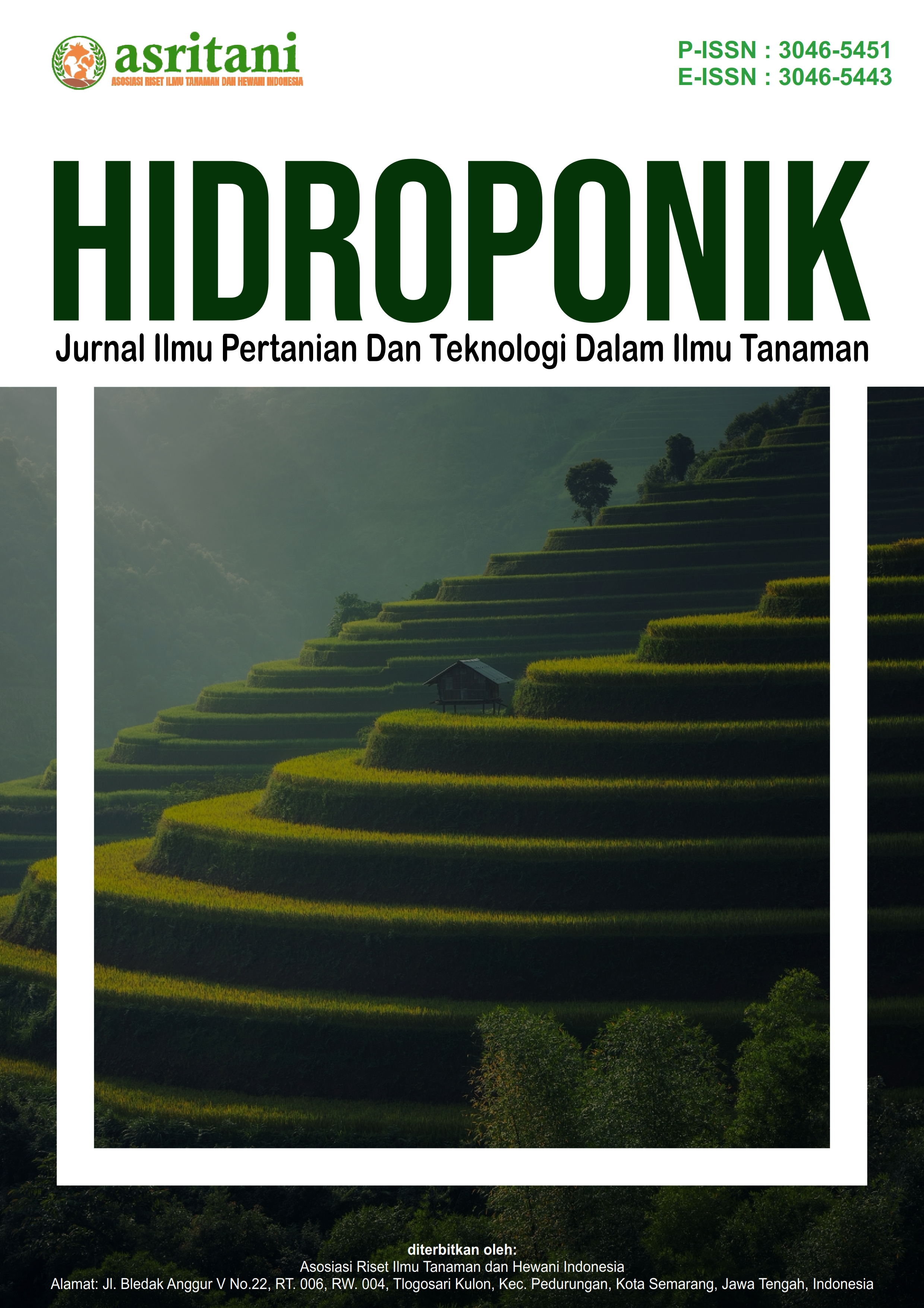Peran Rhizobium dalam Kesuburan Tanah : Kajian Literatur
DOI:
https://doi.org/10.62951/hidroponik.v2i1.229Keywords:
Role of Rhizobium, Soil Fertility, MicroorganismsAbstract
Soil fertility is a key element in the sustainability of agricultural systems that support global food security. One important soil microorganism that plays a role in improving soil fertility is Rhizobium, a bacterium capable of biological nitrogen fixation through a symbiotic relationship with leguminosae plants. This bacterium not only contributes to increasing soil nitrogen availability by 30-50% but also helps reduce dependence on synthetic nitrogen fertilizers, which has implications for reducing greenhouse gas emissions. Nonetheless, the effectiveness of Rhizobium is strongly influenced by environmental conditions such as pH, salinity, and chemical pollutants, which can inhibit its symbiotic ability. Technological innovations, such as nano-based formulations and the development of superior strains, offer solutions to improve the efficiency of Rhizobium, but challenges such as high costs and lack of policy support remain. In addition, the widespread use of Rhizobium inoculants may disrupt the balance of the soil microbial ecosystem, requiring further research. Therefore, integration of technology, policy and farmer education is needed to optimally utilize the full potential of Rhizobium while mitigating environmental risks, to support a more sustainable agricultural system.
References
Choudhury, B., & Das, P. (2023). Genetic compatibility in Rhizobium-legume symbiosis. Microbial Ecology, 86(3), 789-802.
FAO. (2022). The role of biofertilizers in sustainable agriculture. Food and Agriculture Organization.
Kumar, R., & Patel, S. (2023). Impact of Rhizobium on soil health and nitrate pollution. Journal of Soil Science, 29(4), 356-372.
Lee, H., Kim, J., & Park, S. (2024). Environmental factors affecting Rhizobium-legume symbiosis. Microbial Ecology, 45(1), 123-135.
Lee, Y., & Park, J. (2023). Long-term effects of Rhizobium inoculation on soil microbial communities. Soil Ecology Letters, 5(2), 234-248.
Morales, A., Chen, X., & Zhang, L. (2023). Long-term ecological impacts of Rhizobium inoculation in agricultural soils. Agricultural Sustainability Journal, 18(3), 412-429.
Purwaningsih, S. (2016). Isolasi, populasi dan karakterisasi bakteri pelarut fosfat pada daerah perakaran dan tanah dari Bengkulu, Sumatra. Jurnal Teknologi Lingkungan, 13(1), 101. https://doi.org/10.29122/jtl.v13i1.1410
Rahman, A., & Chowdhury, S. (2022). The role of Rhizobium in sustainable agriculture practices. International Journal of Agricultural Sustainability, 20(1), 45-62.
Singh, R., Verma, P., & Gupta, A. (2022). Advances in Rhizobium technology for sustainable agriculture. Biotechnology Advances, 41, 107292.
Smith, B., & Jones, C. (2023). Symbiotic nitrogen fixation: Mechanisms and applications. Plant-Soil Interactions, 58(2), 215-229.
Smith, R., & Lee, K. (2022). Adoption of biofertilizers in developing countries: Policy and challenges. Global Agricultural Policy Journal, 7(3), 129-146.
Wang, Y., Zhao, L., & Liu, X. (2021). Nanotechnology-enhanced biofertilizers: A new era for Rhizobium applications. NanoScience in Agriculture, 10(1), 65-78.
Zhang, H., Li, W., & Zhao, Q. (2021). Contribution of Rhizobium to soil nitrogen availability. Soil Biology & Biochemistry, 154, 108-120.
Zhang, T., Yang, H., & Li, J. (2021). Role of Rhizobium in nitrogen cycling and soil fertility. Soil Biology & Biochemistry, 148, 107835.
Zhang, X., & Wang, Y. (2022). Biofertilizers and their role in reducing greenhouse gas emissions. Agriculture and Environmental Science, 11(4), 341-360.
Downloads
Published
How to Cite
Issue
Section
License
Copyright (c) 2025 Hidroponik : Jurnal Ilmu Pertanian Dan Teknologi Dalam Ilmu Tanaman

This work is licensed under a Creative Commons Attribution-ShareAlike 4.0 International License.





